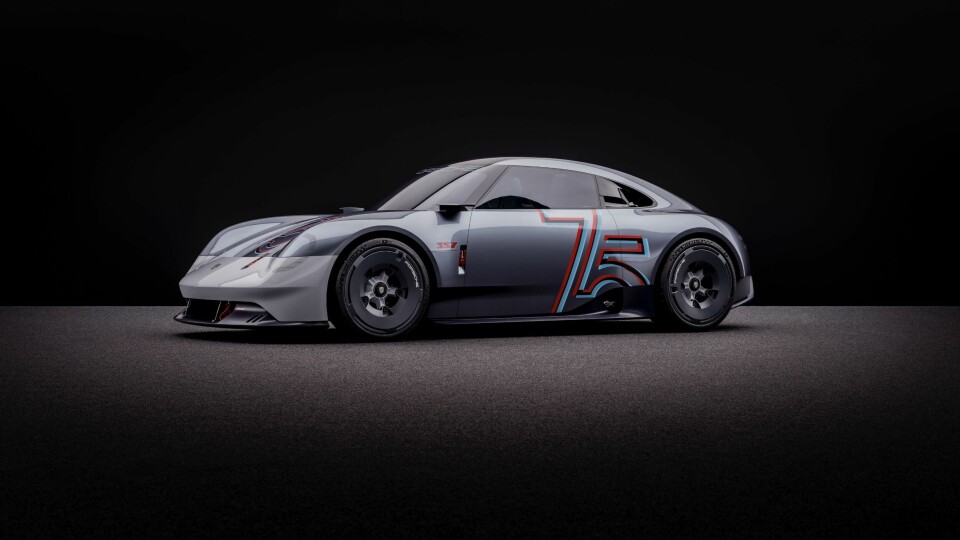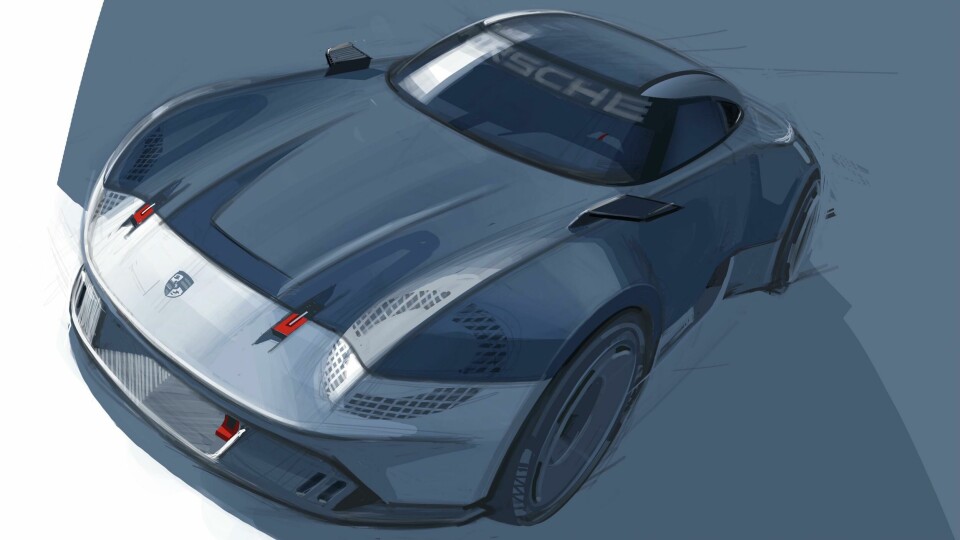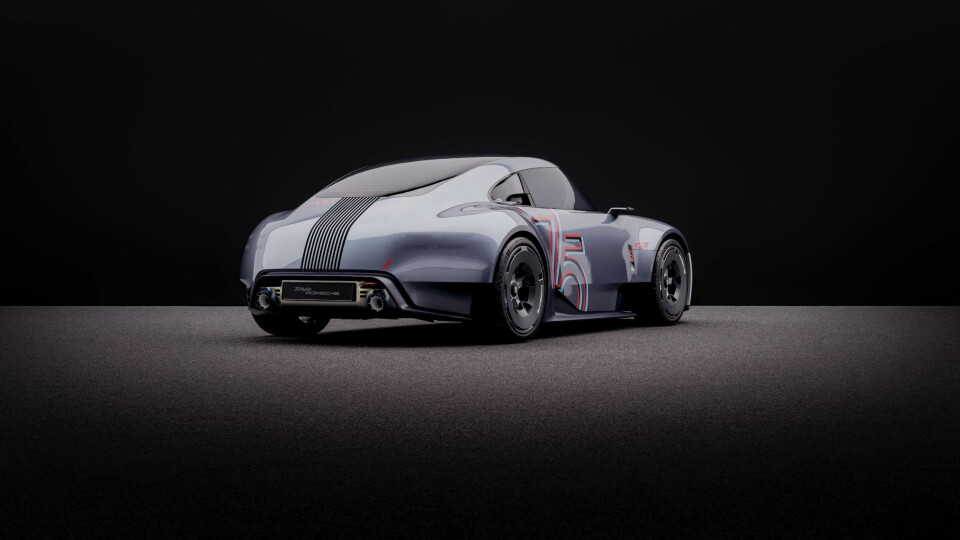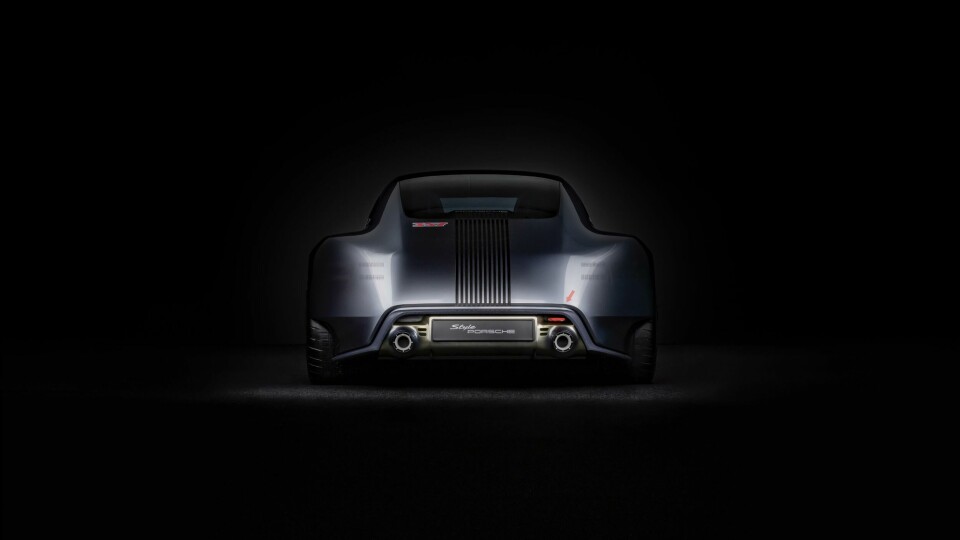
Porsche unveils the vision 357 concept in Berlin; Michael Mauer gives us the inside scoop
The design study pays homage to the Porsche 356 in celebration of the brand’s 75th anniversary — and aims to spark designers’ creativity
In recent years we’ve seen a bevy of Porsche concept cars, some of which were hidden away for years before breaking cover before curious fans. But the Porsche Vision 357 Concept, shown this week at Volkswagen Group’s Drive Forum in Berlin, was designed from the start to be in the limelight.
“One of the major motivations to show the car was to tell the story of how we work and the freedom we have in the design department,” said Porsche design boss Michael Mauer (who was also recently named the successor to Klaus Zyciora as head of all of VW Group design) in a discussion ahead of the Vision 357 debut. “We always get a certain amount of money to think about the future of the Porsche brand without the pressure of production, without the pressure of legal requirements, and just to boost creativity and make sure we can further develop our design language and find a good connection between the tradition of Porsche and the future.”

The Vision 357 is a tribute to the Porsche 356, built by Ferry Porsche, whose oft-cited quotes include, “I looked around and couldn’t find the sports car of my dreams, so I decided to build it myself.”
In 1948, Ferry developed the first 356 prototype, known as the 356/1, using an aluminum body, tubular frame, and many of the mechanical parts from the Volkswagen Beetle. Later, the two-seat roadster went into production, moving from its original mid-engine layout to a rear-engine configuration, while keeping many of the original design elements.
“When you talk about the Porsche brand, everyone thinks of the 911,” Mauer says. “But if you really go back, the 356 was the starting point of the sports car band for Porsche.”
Far from the first car’s humble VW origins, the base for the Vision 357 is today’s 718 GT4 RS Cayman, modified to reflect the pure forms and monolithic shape of its inspiration. Specific elements that recall the 356, Mauer says, include the side view, the proportion, the roofline and the overall soft, round shapes. “This was driven by the technology of the day; it was not yet possible to have hard edges,” he explains. “At the same time, it has a very sculptural and very reduced surface treatment.”
The rear-view is my favorite. It’s the pure essence of the Porsche design DNA
Designers took a unique approach to the Vision 357’s lighting elements, with the headlamps (which echo the round shape of the 356) and tail lamps perforated into the bodywork. In the rear, functional cooling ribs run vertically down the centre of the car like racing stripes — a stylistic nod to the 356’s rear engine cooling grille. “The rear-view is my favorite,” Mauer muses. “It’s the pure essence of the Porsche design DNA. You have the tapering greenhouse, strong shoulders and a clean surface treatment, with very reduced tail lamps.”

Colours chosen for the two-tone paint scheme were Ice Grey Metallic and Grivola Grey Metallic. These aren’t original to the 356, but Mauer says the design team wanted to stay in the family of the factory grey shades popular in the 1950s. The “75” graphics on the doors and hood are, naturally, in reference to the brand’s 75th anniversary. A handful of smaller decals show the design team’s playful side, including signs that say “Air” and “E-fuels only,” as well as a dinosaur that seems to take a self-deprecating shot at the 357’s internal combustion engine.
On one hand you could give it an extremely modern treatment… I prefer a clear link to the historical car
The wheels exude a combination of retro throwback and cutting-edge technology. “Something we are working on intensively is the aerodynamic requirements coming from EVs,” Mauer says. “This is a challenge for us in the design department because we want to see the structure of the wheel. We believe it is more sporty and it also aids in the cooling of the brakes. So on this car we have this kind of balance.”

There is no interior on the Vision 357, but when pressed, Mauer admits, “It would be an interesting task, since on the one hand you could give it an extremely modern treatment based on the current Cayman, or — what I would prefer — is to do a clear link to the historical car like we did with the exterior.” Mauer also notes that “we chose the coupe version to express this monolithic shape, but you can imagine you could do an as-attractive study without the roof.”
Mauer — who also told us that his new job heading up VW Group design won’t affect his day-to-day duties at Porsche — declined to name specific designers who worked on the project, but explains, “I don’t like to talk about the designer who was responsible, because the whole project started in this creative atmosphere where we try to push the entire department. There are a lot of designers and we come together and discuss. It’s a team effort.”
Innovation is necessary for the evolution of Porsche
After Berlin, press materials say, the Vision 357 will make the rounds at “further international events over the course of the year.” While no specifics are given, we’re betting the car will hit the usual posh gatherings including the Goodwood Festival of Speed and Monterey Car Week.
Beyond that, Mauer maintains that doing show cars like the Vision 357 is not only important for the teams internally, he also hopes it will attract new talent to Porsche. “Every year we try to explore possibilities for the brand. That can be just new ideas for an extension of the portfolio, new type of the cars, going into segments Porsche hasn’t been in before, or thinking about further development of a lighting signature,” he reveals. “Innovation is necessary for the evolution of Porsche, and hopefully this makes us even more attractive as a company.”





